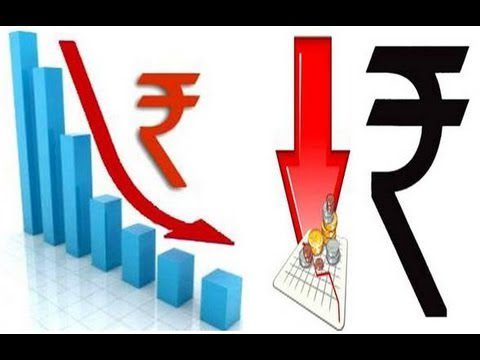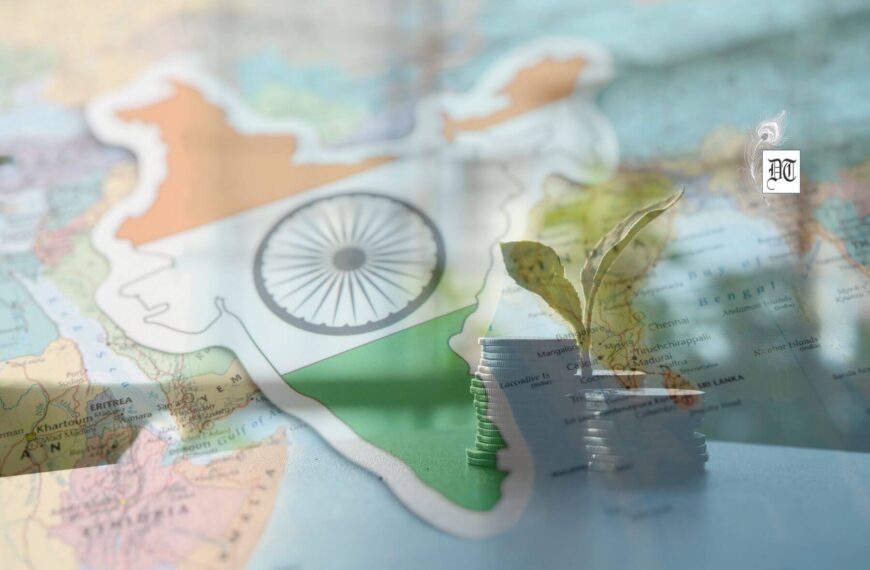In just six months’ time, the value of the Indian currency dropped by almost eight percent to Rs. 68.80 for a US$. According to international currency market forecast, the Rupee to US$ exchange rate is likely expanding further to $1=Rs72.78 by November, this year. That would mean almost 14 percent loss in 11 months. The Indian currency is weakening steadily. A report, for Different Truths.
The constant downward journey this year of Indian Rupee compared to major world currencies – fully or partially convertible – should be a major cause of concern. On January 1, this year, the spot inter-bank market saw the US Dollar opening at $1 = Rs 63.8027. In just six months’ time, the value of the Indian currency dropped by almost eight percent to Rs. 68.80 for a US$. According to international currency market forecast, the Rupee to US$ exchange rate is likely expanding further to $1=Rs72.78 by November, this year. That would mean almost 14 percent loss in 11 months. The Indian currency is weakening steadily. The future outlook, obviously, does not look rosy despite the impressive economic growth rate projection. The rupee is the second-biggest loser in the BRICS group comprising Brazil, Russia, India, China, and South Africa. The Russian ruble is the only currency that has lost more value than the rupee, this year.
The constant downtrend in the value of Rupee suggests that there is something seriously wrong with the country’s trade and financial management. High oil import bill this year may be a key reason for India’s high current account deficit (CAD) and the fall of Rupee. But, there is little effort on the part of the government to contain the outflow of USD by restricting import of avoidable items on the trade account and luxury expenditure on the service account such as foreign travel, foreign transfer of money on multiple accounts, unproductive outward corporate investments, foreign education, borrowing and debt servicing. While India can do little about the international prices of crude oil, it could certainly look into other areas to contain trade deficit and capital outflows.
According to International rating agency Fitch, Indian Rupee has been one of the worst performing currencies in Asia this year. The country’s ambition to emerge as one of the world’s major economies in real terms look somewhat hollow in the face of the constant rise of its CAD. India’s export contribution to its GDP had hit a 14-year low in 2017-18 and imports are surging at disturbing rates. The country’s trade deficit increased to $160 billion in 2017-18 from $112.4 billion in 2016-17. Of this trade deficit, over $60 billion was on account of its China trade alone.
China has become the biggest supplier of merchandise to India, much of which deserve to be compressed if not rigorously controlled. India’s exports to China in 2017-18 amounted to only $13.3 billion while imports added to $76.2 billion. China has on multiple occasions cajoled India by promising to address the high trade imbalances. On paper, it is a different story. At this rate, India’s bilateral trade with China too will soon be unsustainable. Otherwise, the country’s economy will have to pay a very high price for it. The CAD expansion is clearly responsible for a near-continuous devaluation of Rupee. According to RBI, the CAD for the last fiscal widened to 1.9 percent of the GDP from barely 0.6 percent in 2016-17. The current account stands for the net difference between inflows and outflows of foreign currencies.
India’s CAD could have been even larger but for an improvement in the net invisible receipts in 2017-18 mainly on account of “increase in net services earnings and private transfer receipts,” the RBI said. In terms of inflows, gross FDI (Foreign Direct Investment) into India increased to $61 billion in 2017-18 from $60.2 billion in 2016-17. However, net FDI inflows in 2017-18 fell to $30.3 billion from $35.6 billion in 2016-17. As per the RBI data, portfolio investment recorded a net inflow of $22.1 billion in 2017-18 as compared with $7.6 billion a year ago. RBI said there was an accretion of US$ 43.6 billion to the foreign exchange reserves (on a BoP basis) in 2017-18. Higher net services earnings and private transfer receipts may have helped in arresting even a sharper fall of Rupee during the last financial year. Unfortunately, Rupee is under real stress, this year. And, the trend may continue at least until the next Parliamentary election.
If the currency downtrend is anyway linked with the status of the economy, there is little to be excited about India’s projected GDP growth and its impact on ordinary citizens. How does one link a 12 percent-plus fall in the value of a national currency with the country’s seven percent-plus GDP growth? Maybe some of India’s best known economists such as former RBI governor Raghuram Rajan, or just-resigned chief economic advisor Arvind Subramanian, could explain. Rajan was not particularly happy with the style of the government’s economic management. He was too sharp to the comfort of many bureaucrats and politicians and was often critical about the economic policies. Freshly resigned Subramanian’s views on the state of the economy are still not public. He must have been very unhappy with the sudden 42 per cent spurt in India’s CAD, last year. Subramanian knew very well that higher oil import price was not the only cause of high CAD.
Oil imports resulted in net outflows of $71 billion in FY18, up from $55 billion in FY17. In fact, non-oil imports were up by 18 per cent. Also contributing to the increase in the import bill was the rise in gold purchases. The net forex outgo due to gold imports rose 22 per cent. Thankfully, RBI has been regularly buying US$ from the market to maintain a level of foreign exchange reserves to prevent any panic in the market. But for such steps, Rupee would have probably seen a bigger dip by now. Among the world’s top 10 currencies in terms of exchange value with US$ at present are: Kuwait Dinar, Bahrain Dinar, Oman Rial, British Pound, Euro, and Swiss Franc. Notably, British Pound lost 17 percent value since last year.
Nantoo Banerjee
©IPA Service
Photo from the Internet





 By
By

 By
By
 By
By